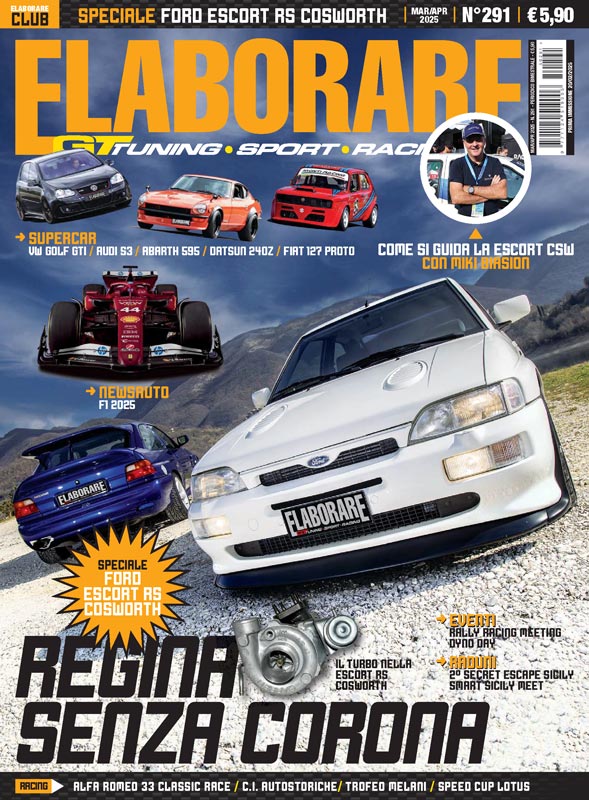The Nardò Technical Center it is the only circuit in the world capable of hosting high-performance car and motorbike tests speed (extreme) on a long runway 12.6 kilometers. The plant Nardo in Puglia, managed since 2012 by Porsche Engineering Group GmbH, a 100% subsidiary of Dr. Ing. hc F. Porsche AG, Stuttgart, has a 700 hectares with beyond 20 test tracks handling and technical equipment for testing activities at any level.
The Nardò track
There Nardò track which is located on the border between the provinces of Brindisi, Taranto and Lecceowes its legendary fame also to isolated location and strict secrecy measures. For automotive manufacturers, the opportunity for efficient and virtually unlimited testing is critical. In a few weeks it is possible to obtain, for example, corrosion resistance data throughout the life cycle of a car or it is possible to reproduce the weather conditions of different countries and different regions, such as African off-road tracks or wet roadways even on sunny days.
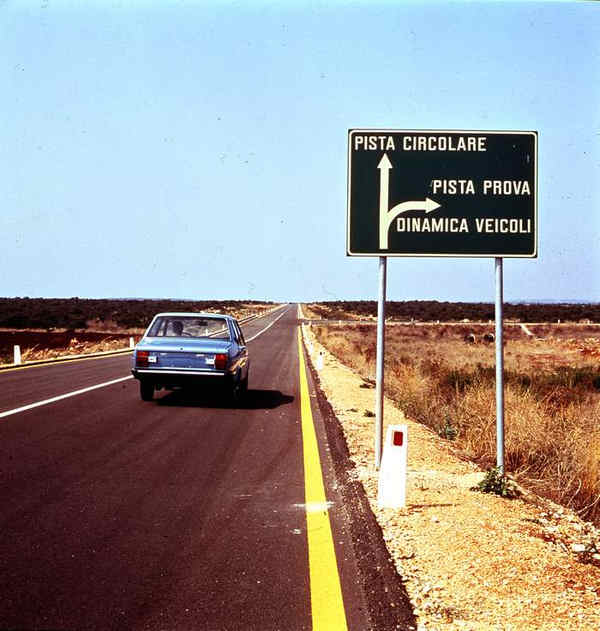
Furthermore, long trips for supplies and high transportation costs are avoided, as the wide variety of test locations allows developers to perform a large amount of testing in the same place.
Nardò runway expansion
In 2021, an expansion plan for the Nardò runway was launched, to expand and build new structuresthat include nine new tracks (currently 12), technical and administrative buildings, a canteen, a car park, a logistics and maintenance centera petrol station, an assessment and check-in centre, and a medical Center.
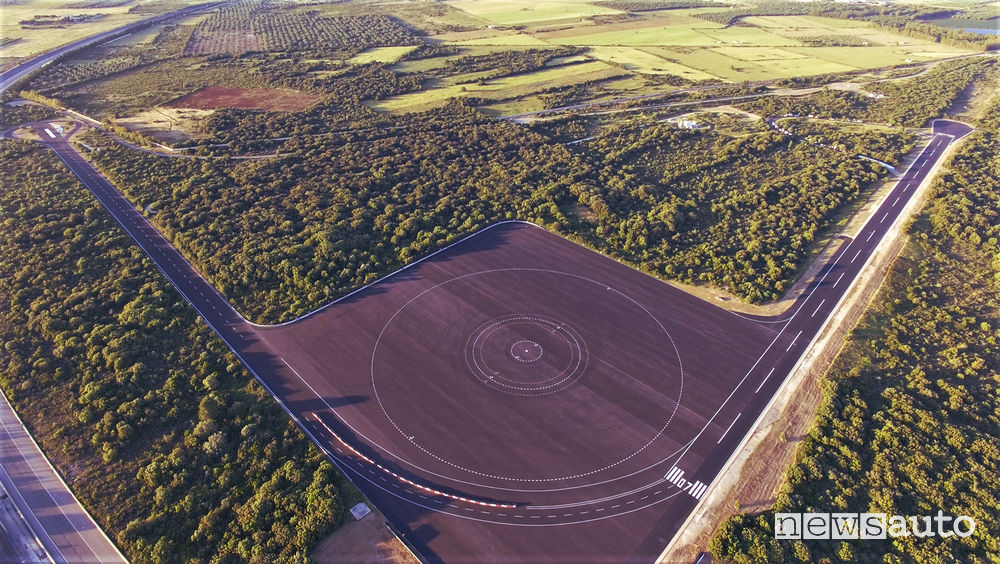
Furthermore, an Advanced First Aid Point will be created in Nardò with an operating room and a helicopter pad for the emergency service.
This led the Region to declare public interest the project to expand the test track (NTC, Nardò Technical Center), which also involves the expropriation of 500 hectares of forest. Initially opposed due to negative environmental impacts, the project was unblocked with the approval of the compensatory workssuch as reforestation and a fire service.
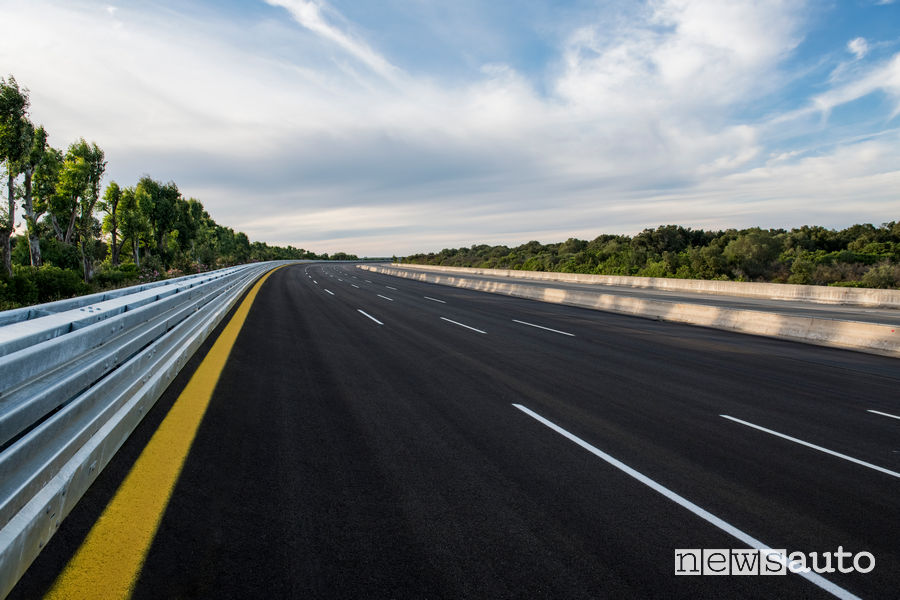
The development plan of the Nardò Technical Center (NTC), approved by the Puglia Region, also provides for theexpropriation of 351 hectares of land belonging to 134 private individuals, some of whom are engaged in productive activities, especially agricultural. The designers specify that the acquisition of this land is not linked to the expansion of the runways (already available for the NTC), but for the construction of works of prevalent public interest, which overall involve 508 hectares.
Protests against Porsche in Nardò
The project aroused strong protests by environmentalists, local committees and several mayors of the area, as it will involve the sacrifice of a large green area and the expropriation of neighboring land. Furthermore, controversy has arisen regarding the compensatory workssuch as reforestation, and the granting of public interest by the Puglia Region.
In this regard, Porsche, through the CEO of Porsche Italia, Pietro Innocentiannounced actions to resolve the dispute, specifying that Porsche has planned an investment plan of over 400 million euros over 10 years to renovate the existing center, focusing on future technological challenges, such as autonomous driving and the connectivity.

This investment is expected to have a significant impact on the area, with the creation of new jobs. Porsche declares its willingness to collaborate with the authorities for any necessary changes to the plan.
Nardò track, the history
The idea of creating a Test Center as “Società Autopiste Sperimentale Nardò” came to fruition in 1975 with Fiat. At the time there was a ring with lanes for cars and trucks and a dynamic track for cars. Seven years later the expansion with the dynamic track for trucks was built. It was built by FIAT at the beginning of the 70s and inaugurated in 1975 under the name SASN.
In the 1999the testing center was acquired by the Italian Prototipo group which began an expansion of Nardò by adding others 5,000 square meters of workshops and offices to meet the needs of customers.

In the 2002 It is in the 2008 they follow test tracks to test driving comfort and check noise and a handling path which reproduces the individual curves of the race on a 6.2 km track Nürburgring Nordschleife. In May 2012, Porsche Engineering Group assumes responsibility for the test area.
RECORDS IN NARDO'
The Nardò Technical Center has also written history for its ring which, with a diameter of four kilometers and a length of 12.6 kilometers, continues today to be considered the fastest circular car track in the world. For various car manufacturers it continues to form the basis of numerous records.
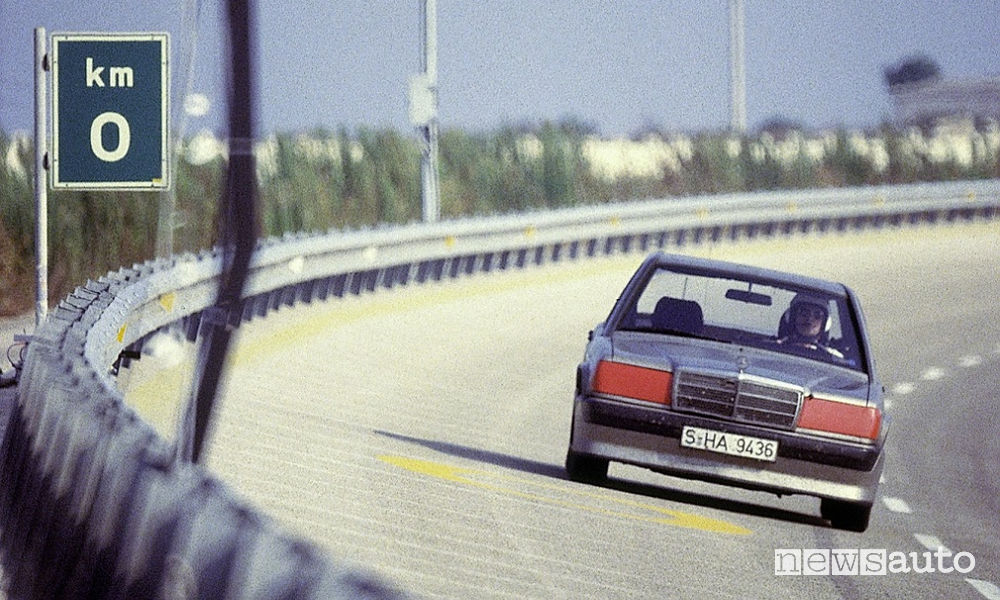
Starting with Mercedes-Benz that here, with the C111-IVin 1979, exceeded the limit of for the first time 400 km/h reaching a speed of 403.978 km/h. In 1980, the ARVW (Aero-dynamik Research Volkswagen) achieved six category records and two world speed records on the Nardò track.

In the 1982, Porsche with a 928 S wins the record of 24 hours. At the time, the revolutionary Porsche car with a front engine and manual transmission at the rear axle covered the 6,033 kilometers at an average speed of 251.4 km/h. Over ten years later, Porsche provided Nardò with an exemplary test of the transaxle scheme: in 1993, with a Porsche 928 GTSas standard, a private Austrian team manages to cover in 24 hours 6,377.25 kilometers at an average speed of 265.72 km/h.
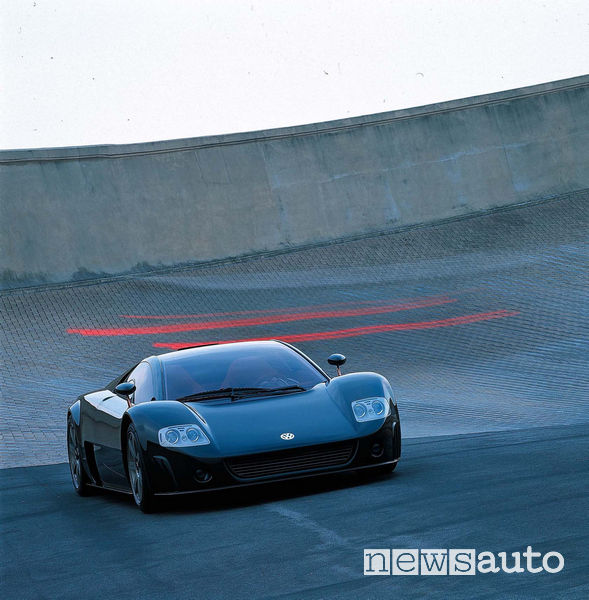
A record broken only in 2002 by the concept car Volkswagen “W12 Nardò”who so far holds seven world records, including the distance and speed records 24 hours with 7,740.576 kilometers traveled at an average speed of 322.891 km/h.
The Blizz Primatist single-seater driven by Gianmaria Aghem set the speed, duration and distance record for electric vehicles on the Nardò track in 2021 and another 8 records in 2023 thanks to a new engine electric/hydrogen hybrid.
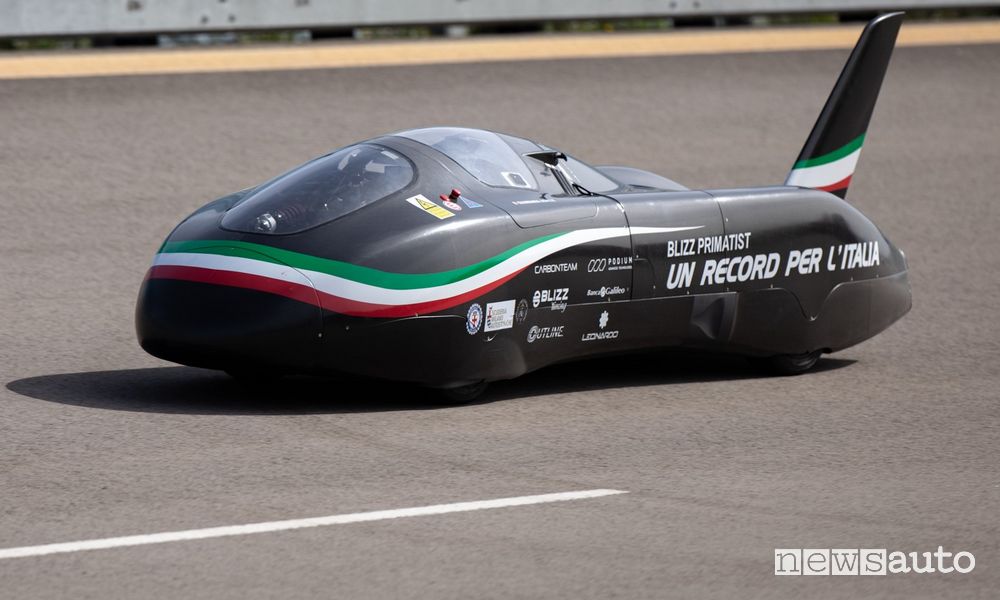
The Nardò slope complex has been known since 2005 as Nardò Technical Center.
The records of the Nardò track
- On May 13, 1979 a Honda 125cc sets the world speed record 24-hour average: 137.866 km/h.
- On 5 July 1979 the barrier was broken for the first time 400 km/h with a specially made car, the Mercedes-Benz C111-IV who reached a speed of 403.978 km/h, setting the Italian speed record, and managed to complete a complete lap of the ring in 1 minute and 57 seconds.
- On October 10, 1980 one Volkswagen ARVW it set the speed record for a diesel car by reaching a speed of 362.07 km/h.
- on November 7, 1982 one Porsche 928 S got the 24-hour speed record: covered 6,033 kilometers at an average speed of 251.4 km/h.
- On November 28, 1982 aAlfa Romeo Giulietta sets the average speed record over 50,000 km: 175.628 km/h.
- On August 17, 1983 one Mercedes Benz 190E 2.3-16 gets the world record for average speed over 25,000 km: 247.6 km/h. On the following days, 19 and 21 August, the 25,000 mile and 50,000 km records were broken at average speeds of 247.8 km/h and 247.9 km/h.
- The prototype motorcycle on 14 September 1986 Elf R sets 6 world records, including average speed over 10 km 243.572 km/h and maximum speed of 321 km/h.
- On April 4, 1988 aAudi 200 quattro obtains the world speed record for 500 miles with an average speed of 324.509 km/h and for 1,000 km at 326.403 km/h.
- On August 29, 1993 one Honda NR 750cc driven by Loris Capirossi sets the world record for maximum speed: 304.032 km/h. Furthermore, standing start records are set for the kilometer at 299.825 km/h and for the 10 km at 283.551 km/h.
- In 1993 one Porsche 928 GTS broke the previous record by covering 6,377.25 km in 24 hours at an average speed of 265.72 km/h.
- On June 2, 1994 the electric motorcycle Violent Violetdesigned by engineer Fabio Fazi and led by Max Biaggiobtains 5 world speed records for electric motorcycles: 1/4 mile, kilometer and standing mile, flying kilometer (164.498 km/h) and maximum speed of 168 km/h.
- On July 2, 1994 one Bugatti EB110GT driven by Loris Bicocchi set the speed record for a methane-powered car with road approval, reaching a speed of 344.7 km/h.
- In 1994 the Bertone ZER managed to set the 1km speed record for an electric car by traveling at an average speed of 303,977 km/h and the distance record in 1 hour covering 199.882 km.
- On August 27, 1995 aAprilia 250cc obtains the flying kilometer record with an average speed of 254.021 km/h.
- On June 3, 2000 one Suzuki GSX 1300R sets the world speed record for the flying kilometer with 306.598 km/h.
- On February 16, 2002 one Lamborghini Murciélago as standard it achieved the average speed record for 1 hour at 305.041 km/h and for 100 miles at 320.254 km/h.
- On February 23, 2002 one Volkswagen W12 also known as Volkswagen Nardò set the world record for average speed over 24 hours, covering a distance of 7740.576 km at an average speed of 322.891 km/h.
- In 2004 the concept cars electric Helixcharacterized by 8 driving wheels, reached a speed of 370 km/h.
- On February 28, 2005 one Koenigsegg CCRdriven by Loris Bicocchi, set the speed record for a production car reaching i 388 km/h.
- On May 25, 2008 a Mercedes-Benz Truck Actros BlueTec III sets the efficiency record for a 40-ton truck with an average consumption of 19.44 liters per 100 km with a total distance traveled of 12,728 km.
- On 18 August 2019 a pre-series example of the electric Porsche Taycan he covered the distance of 3,425 km in 24 hours.
- In 2021, the Blizz Primatist single-seater driven by Gianmaria Aghem set the speed, duration and distance record for electric vehicles on the Nardò track.
- In 2023 the Blizz Primatist single-seater driven by Gianmaria Aghem was updated with a new electric/hydrogen hybrid engine, conquering 8 world records of speed, duration and distance.
Read also:
→ What do you think? Drop by discussions on the FORUM!
#record #track #Nardò #history #records
